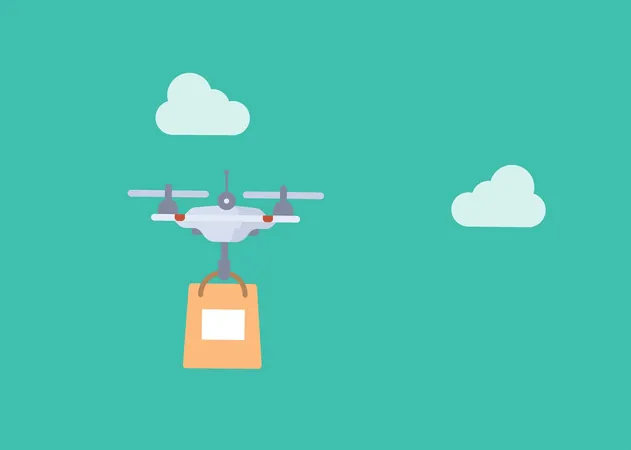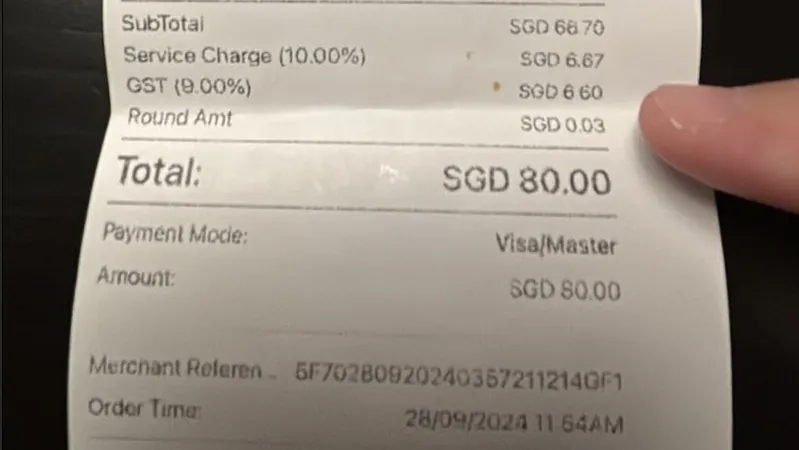
Drones: The Game-Changer in the Fight Against Opioid Overdoses
2024-10-09
Author: Yu
The Impact of the Opioid Epidemic
The opioid epidemic has wreaked havoc across the United States, claiming the lives of hundreds of thousands over the past two decades and leaving a devastating impact on families and communities nationwide. In the face of this severe public health crisis, healthcare professionals are urgently seeking effective solutions to save lives during opioid overdose emergencies.
Drones as a Life-Saving Solution
What if drones could be the key to turning the tide in this fight? Recent research suggests that these unmanned aerial vehicles could dramatically improve response times and enhance the chances of survival for overdose victims.
Research by Miguel Lejeune
Miguel Lejeune, a professor specializing in decision sciences and electrical and computer engineering at George Washington University, conducted an insightful study to investigate the potential of drone technology in emergency medical responses. His research, titled "Drone-Delivery Network for Opioid Overdose: Nonlinear Integer Queueing-Optimization Models and Methods," co-authored with GW alumnus Wenbo Ma, delves into the comparative response rates of drones versus traditional ambulances during overdose emergencies.
The Importance of Rapid Response
With mathematical optimization models at their disposal, Lejeune and his team provided crucial data for cities aiming to establish drone bases, determine the number of drones to be deployed, and designate their operational routes for delivering life-saving medication like naloxone.
Lejeune paints a stark picture: "In the U.S., around 2 million people face overdose issues every year. Every second is critical in these situations." Just five minutes after an overdose begins, a victim risks severe consequences, including permanent brain damage and life-threatening complications such as seizures, slowed breathing, and cardiac arrest.
"The rapid provision of medical treatment is imperative—opioid overdoses can be fatal without swift intervention," Lejeune emphasized. Many health professionals are heralding drones as a 'magic bullet' in the emergency response arsenal, particularly for critical cases such as overdoses and cardiac arrests.
Current Challenges in Emergency Response
Currently, when bystanders witness an overdose, they dial 911 and wait for ambulances, often facing frustrating delays due to the shortage of emergency vehicles, especially in rural regions where distances are greater and resources are scarce. Some cities grapple with high demand, traffic congestion, and insufficient infrastructure, hindering timely responses.
Quantifying the Impact of Drones
To quantify the difference that drones could make, Lejeune examined overdose response data from Virginia Beach over a two-and-a-half-year period (2017-2019). His study demonstrated that while ambulances averaged a response time of nearly 9 minutes, drones could arrive in just 1.5 minutes—a crucial difference that could exponentially increase survival rates. "The chance of survival could increase by up to 500%—an incredibly significant gain," he asserted.
According to the analysis, if drones were deployed in Virginia Beach, they could slash response times by 82%, boosting survival chances by over 273% and potentially saving an additional 33 lives annually.
How the Drone System Would Work
So how would this drone system work? Upon receiving a 911 call, emergency dispatchers would route a drone from the nearest station, sending it directly to the overdose scene. Once there, the drone would deliver a package containing naloxone. A bystander, guided by a healthcare professional observing via a live video feed from the drone, could then administer the medication.
Lejeune's research indicates that most individuals are willing to take action during emergencies, including administering medication to overdosing victims. There have already been several pilot programs exploring the utility of drones in emergencies, including cardiac cases enabled by defibrillator deployments.
Challenges Ahead
However, the path to implementing drone technology in these critical responses is not without challenges. Concerns regarding no-fly zones in cities, public apprehension about drones flying overhead, and potential technical failures in inclement weather must be addressed.
The Future of Drones in Emergency Response
Despite these hurdles, Lejeune remains optimistic: "The exploration of drone technology in emergency responses has tremendous life-saving potential." As we look towards a future where innovation meets urgent healthcare needs, drones could very well be the breakthrough solution in combating the opioid crisis and saving countless lives.
Stay tuned as the excitement builds—the future of emergency response may very well take to the skies!





 Brasil (PT)
Brasil (PT)
 Canada (EN)
Canada (EN)
 Chile (ES)
Chile (ES)
 España (ES)
España (ES)
 France (FR)
France (FR)
 Hong Kong (EN)
Hong Kong (EN)
 Italia (IT)
Italia (IT)
 日本 (JA)
日本 (JA)
 Magyarország (HU)
Magyarország (HU)
 Norge (NO)
Norge (NO)
 Polska (PL)
Polska (PL)
 Schweiz (DE)
Schweiz (DE)
 Singapore (EN)
Singapore (EN)
 Sverige (SV)
Sverige (SV)
 Suomi (FI)
Suomi (FI)
 Türkiye (TR)
Türkiye (TR)